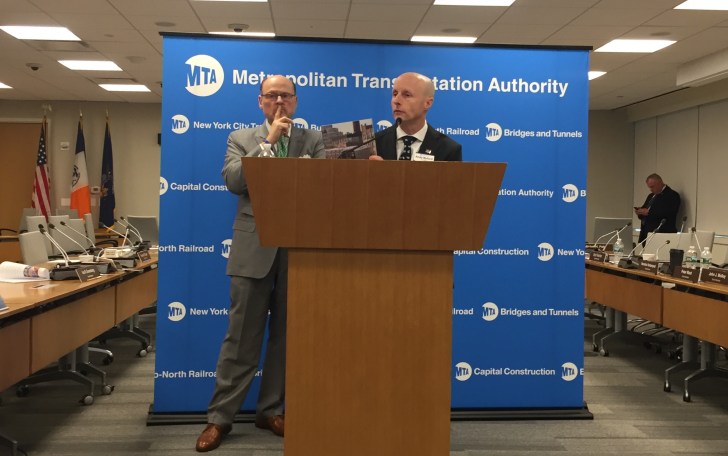The MTA is in a death struggle of cutting its budget and reducing service, setting off another round of finger-pointing about who should pay to save the cash-strapped state authority. But securing dedicated funding for mass transit is only half the battle. Here are three reasons why:
The Funding Options on the Table Aren’t Enough — And Politicians Don’t Have a Clue
Under fire from Governor Cuomo for the city to pony up, Council Speaker Corey Johnson managed to convince Mayor de Blasio this spring to contribute half of the funding for the MTA’s short-term, $900-million "subway action plan." Now the governor wants more: a city commitment to paying half of the $37-billion “Fast Forward” plan drawn up by New York City Transit President Andy Byford.
That's a lot of money. But none of the proposals for raising cash — congestion pricing, Mayor de Blasio's millionaires tax proposal, bringing back the commuter tax — would come even close. Tolling cars to enter Midtown would only raising about $1 billion annually, which is enough to cover only about $12-15 billion in capital borrowing, former Assembly Member Jim Brennan wrote in Gotham Gazette last week.
Brennan's piece argued that Albany should raise state corporate taxes to get back some of the cash the private sector got from Trump's tax cuts. Gubernatorial candidate Cynthia Nixon says the state could raise $7 billion with a carbon tax, with some of that going to the MTA.
But Brennan isn't in Albany anymore. And Nixon won't likely get there.
Meanwhile, elected officials aren’t thinking that big. Their public discussion remains limited to useless binaries of "city vs. state" and "congestion pricing vs. millionaire’s tax." If the MTA is serious about funding Byford’s plan, however, everything needs to be on the table — and then some.
Declining Ridership Means Less Money
The MTA’s July financial update delivered sobering news: The agency anticipates cash deficits to grow in the coming years, rising higher than the last peak in 2009, during the Great Recession. Even the regularly scheduled fare and toll increases and savings goals won’t close the $634-million anticipated deficit for 2022, which represents 3.4 percent of the agency's $18.6-billion operating budget that year.
The subway’s ongoing ridership decline, which shows no evidence of letting up, means future financial prospects are even more precarious. Last month’s budget update predicted $376 million less fare revenue through 2022. Farebox revenue will drop from 52 to 48 percent of the agency's operating budget.
And that’s slated to happen when New York’s economy is thriving, at least relatively speaking. "These deficits are basically as large as they've been since the last recession,” said Jamison Dague of the Citizens Budget Commission. “This is when the economic is, if not [doing] as well as a couple of years ago, still growing."
More money passing through the city should mean more people riding the subway. That’s not happening right now — in huge part because New Yorkers have lost faith in transit and abandoning it in droves.
The City Has No Reason to Trust #CuomosMTA With Its Money
De Blasio has balked at forking over money for subway repairs. He has good reason to be skeptical because the MTA and the governor's office have not been forthright about its financial situation: The MTA spent Johnson's $418-million subway action plan contribution to hire 2,700 new employees for overdue maintenance work, but the agency also suddenly found $562 million by cutting “non-essential vacant positions,” Nicole Gelinas of the Manhattan Institute noted in the New York Post last week.
Is it any wonder that the mayor doesn't trust the MTA?
Meanwhile, the governor routinely robs the agency for cash for other projects. On Thursday, a broad coalition of business, labor and advocacy groups called on Cuomo to sign the Statewide Transit Lockbox bill [PDF]. The legislation requires the state be transparent and forthcoming about any diversions of funds away from mass transit. It's been passed before, but Cuomo has never signed it.
"It's easy to understand why the city hasn't wanted to put up this money. It really does start with much better governance," Gelinas told Streetsblog.






